Table Of Content
- Choosing the Right Spot for Your Campfire
- Setting Up Your Campfire for a Safe and Enjoyable Experience
- Scout the Perfect Location
- Consider the Wind Direction
- Keep a Safe Distance
- Gathering the Necessary Supplies
- Essential Supplies
- Optional Supplies
- Building a Proper Fire Ring
- Choosing the Right Spot for Your Campfire
- Gathering the Necessary Supplies
- Building a Proper Fire Ring
- Preparing the Campfire Pit Safely
- Preparing the Campfire Pit Safely
- Gather the Right Materials
- Create a Fire Ring
- Keep a Safe Distance
- Lighting the Campfire Correctly
- Essential Tips for Lightning the Campfire
- Proper Techniques for Starting the Campfire
- Ensuring Safety While Lighting the Campfire
- Maintaining a Safe and Controlled Flame
- Be Mindful of Sparks and Embers
- Adjust the Size of the Flames
- Monitor Wind Conditions
- Extinguishing the Campfire Effectively
- Why Is Properly Extinguishing a Campfire Important?
- Follow These Steps to Extinguish Your Campfire Safely
- Benefits of Properly Extinguishing a Campfire
- Frequently Asked Questions (FAQs)
As outdoor enthusiasts, we all know the joy and sense of camaraderie that comes with gathering around a crackling campfire under the starlit sky. However, with this cherished experience comes a great responsibility – ensuring the fire is built and maintained safely. Building and maintaining a safe campfire is not just a skill but an essential part of your camping journey.
From choosing the right location to responsibly extinguishing the flames, each step plays a crucial role in protecting yourself, others, and the environment. By mastering the art of safe campfire practices, you enhance your outdoor experience and contribute to preserving our natural landscapes.
This comprehensive guide will delve into building and maintaining a safe campfire. We will cover everything from selecting a suitable site and gathering the right materials to properly monitoring and extinguishing the fire. Whether you are a seasoned camper or a novice adventurer, this knowledge will empower you to create a warm and inviting campfire while prioritizing safety.
So, let’s embark on this journey together, where we learn the ropes of creating a safe and sustainable campfire that will light up the darkness and warm our hearts, all while respecting the sanctity of nature around us.
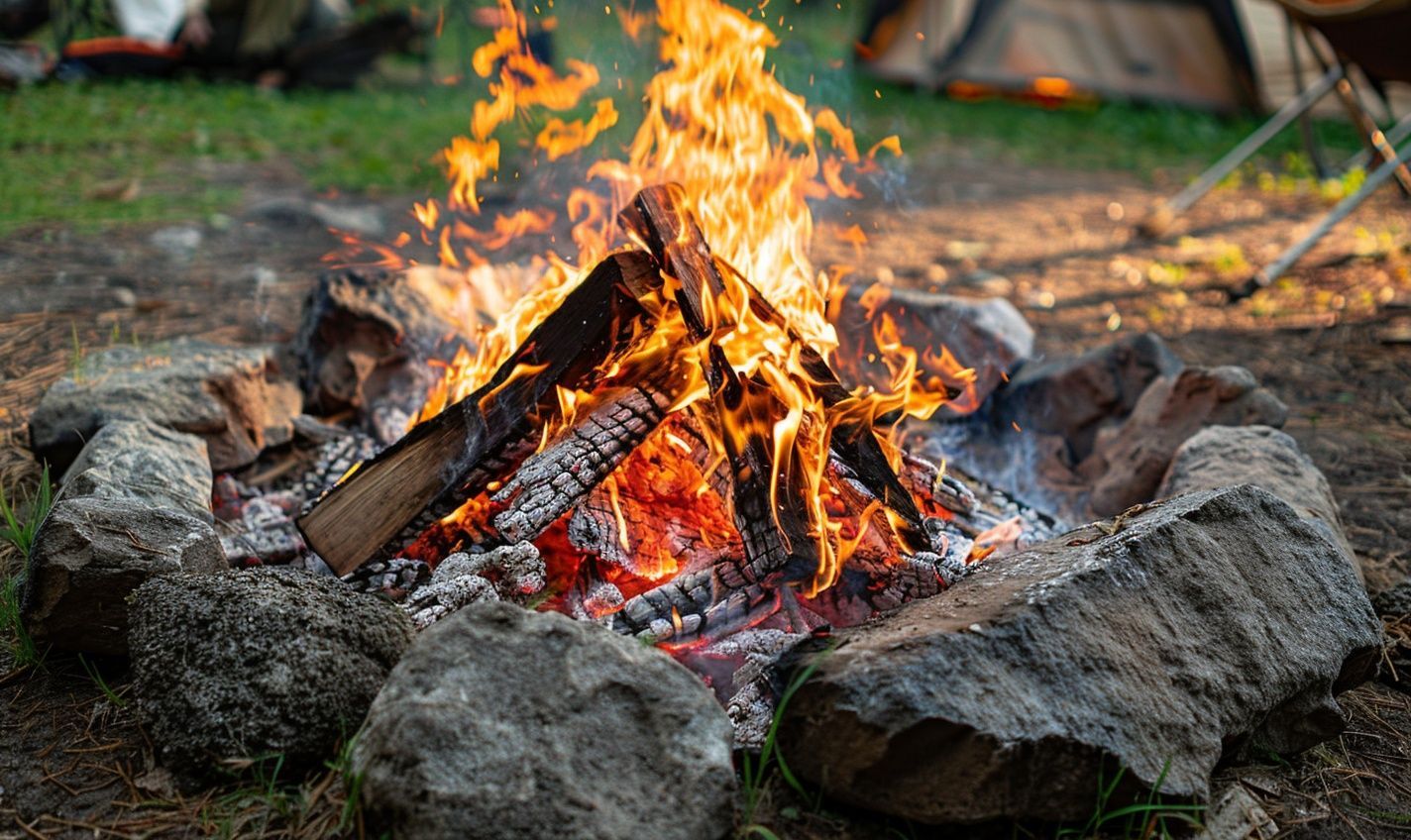
Choosing the Right Spot for Your Campfire
Setting Up Your Campfire for a Safe and Enjoyable Experience
When building and maintaining a safe campfire, your chosen location is crucial. Not all spots are created equal, and finding the right one is essential for safety and ambiance. Here’s how to set up your campfire for a safe and enjoyable experience:
Scout the Perfect Location
And so, the quest begins! Look for a level spot away from overhanging branches, dry grass, and bushes. Look for any potential hazards that could turn your cozy campfire into a scene from a disaster movie. Remember, safety comes first!
Consider the Wind Direction
But what about the wind, you ask? A gentle breeze can be your ally, but a strong gust could quickly turn your campfire into a raging inferno. Position your fire ring or pit so the wind blows smoke away from your campsite. You don’t want to be doing the “campfire smoke dance” all night long!
Keep a Safe Distance
And now, for the grand finale – maintaining a safe distance. Set up your campfire at least 15 feet away from tents, trees, and other flammable objects. It’s better to be safe than sorry. Plus, no one wants to wake up to the smell of smoke inside their tent!
By following these simple guidelines, you’ll be well on your way to enjoying a safe and memorable campfire experience. So, gather around the crackling flames, toast some marshmallows, and share stories under the starlit sky. Just remember to respect the fire and nature – they’re both pretty amazing when treated with care!
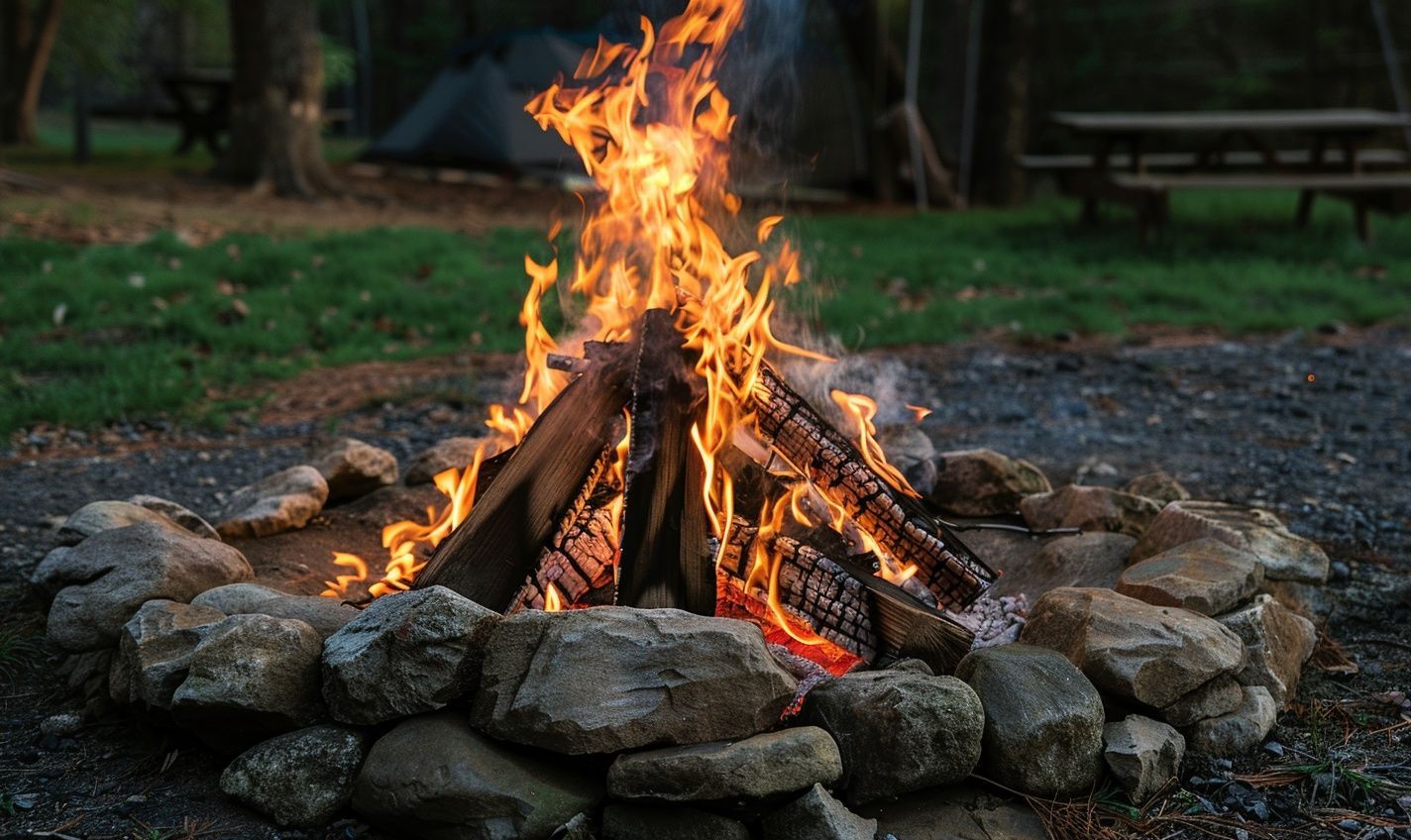
Gathering the Necessary Supplies
Having the right supplies is crucial when building and maintaining a safe campfire. Let’s make sure you are fully prepared before lighting that flame. Here is what you’ll need:
Essential Supplies:
– Firewood: Choose dry, seasoned wood for a cleaner burn and reduced smoke.
– Fire Starter: Bring matches, lighters, or fire starters for easy ignition.
– Water: Have a bucket of water nearby to douse the fire if needed.
– Shovel: Use a shovel to control the fire and smother embers when extinguishing.
– Windshield: Create a barrier to shield the fire from solid winds.
Optional Supplies:
– Poker: A long stick can help rearrange logs safely without getting too close.
– Gloves: Protect your hands from heat and potential splinters.
– Grill Rack: Turn your fire into a makeshift grill for cooking meals.
With these supplies, you’ll be well-equipped to handle any situation while building and maintaining your campfire.
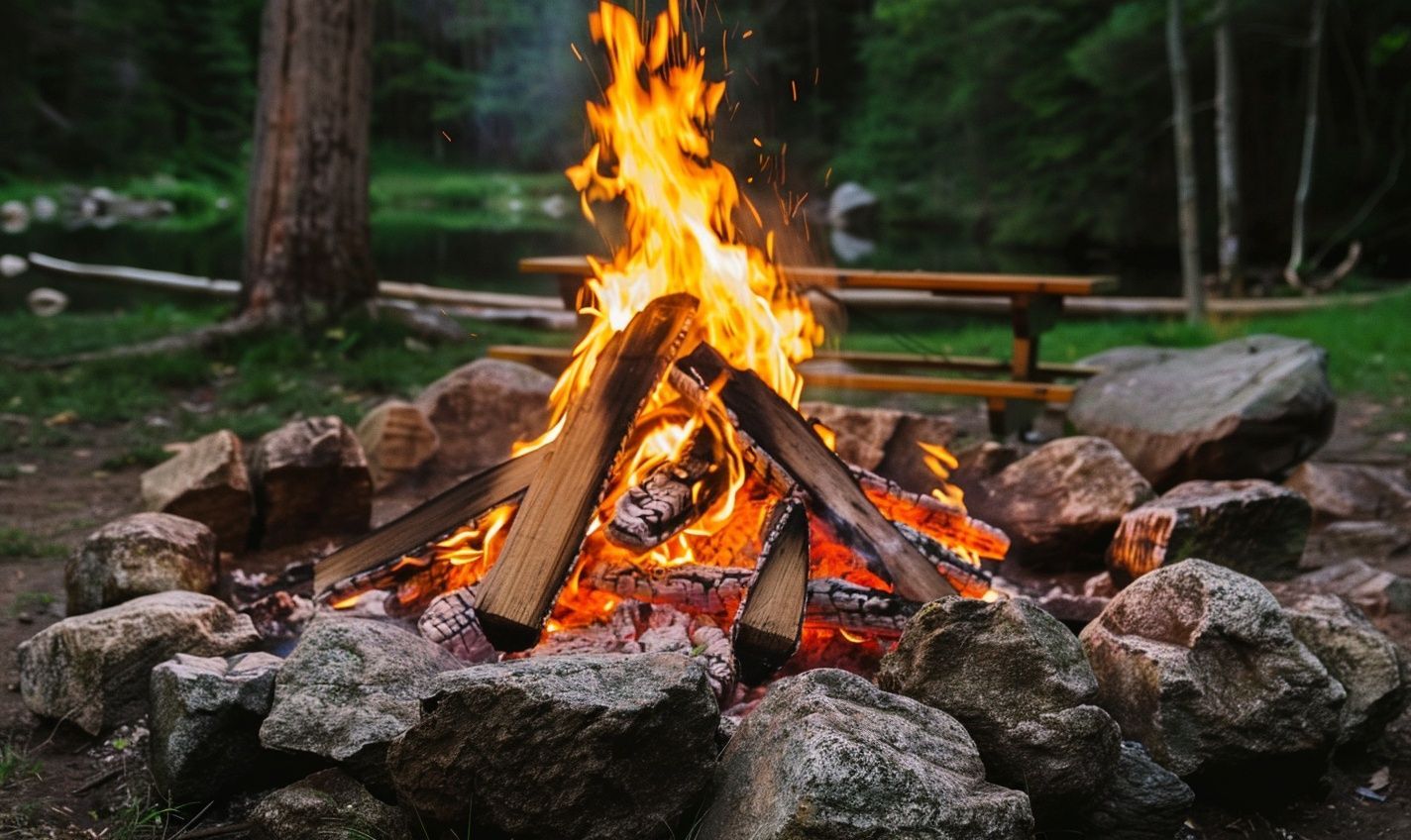
Building a Proper Fire Ring
Choosing the Right Spot for Your Campfire
Before you start a campfire, make sure to scout the perfect location. Look for a flat, open area away from low-hanging branches, dry leaves, or flammable materials.
Do you want your flames to dance freely? Pick a spot with good ventilation and keep a safe distance from your tent and other camping gear.
Gathering the Necessary Supplies
Now, it’s time to gather your supplies. Here’s a quick checklist:
- Dry wood, kindling, and newspaper for starting the fire
- A shovel and bucket of water for safety
- Stones or a fire ring to contain the flames
Building a Proper Fire Ring
Creating a fire ring is essential to prevent your campfire from spreading uncontrollably. Think of it as drawing a line in the sand – your flames stay within bounds, keeping you safe.
Use rocks or a purpose-built metal fire ring to establish a clear boundary for your fire. Consider building it at least three feet in diameter for a manageable and safe campfire.
Here are a few simple steps to build a fire ring:
- Gather rocks or use a metal ring
- Clear the area around the ring of any debris
- Place the stones or rings in a circle, ensuring they are stable
Preparing the Campfire Pit Safely
Now that your fire ring is in place, it’s time to prepare the campfire pit. Remove any flammable material in and around the ring to create a fire-safe zone. Remember, a well-prepared pit ensures a safer and more enjoyable camping experience.
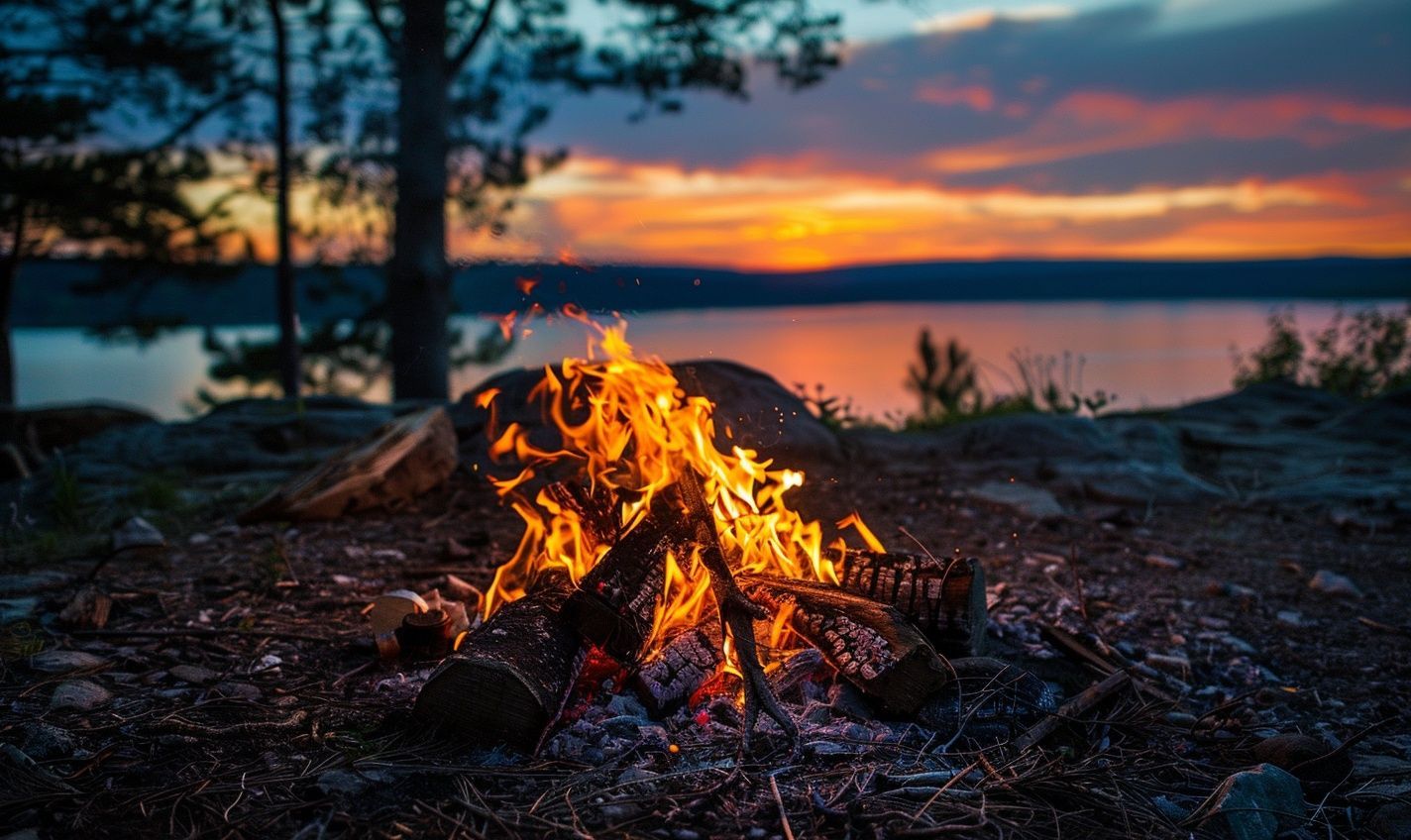
Preparing the Campfire Pit Safely
Building a campfire is an essential part of the camping experience but comes with responsibilities. Properly preparing the campfire pit is crucial to ensuring the safety of yourself and the environment around you. Let’s explore some tips to help you build and maintain a safe campfire.
Gather the Right Materials
Before starting your campfire, make sure you have all the necessary materials on hand:
- Dry firewood: Opt for wood that snaps easily and produces a clean burn.
- Kindling: Small sticks or dry leaves to help ignite the fire.
- Matches or a lighter: Essential for lighting the fire.
- Water and a shovel: For safety precautions and extinguishing the fire.
Create a Fire Ring
Building a proper fire ring can help contain the flames and prevent the fire from spreading uncontrollably. Here’s how to do it:
- Clear the area of any debris or dry vegetation.
- Gather rocks or use a metal fire ring to create a circle at least three feet wide.
- Place a layer of sand or gravel inside the ring for extra protection.
Remember, a well-built fire ring keeps your campfire contained and reduces the risk of accidents.
Keep a Safe Distance
When setting up your campfire pit, keep a safe distance from tents, trees, and other flammable objects. A general rule of thumb is to keep at least 15 feet of space around your campfire to prevent unexpected fires.
Now that you’ve safely set up your campfire pit, you’re one step closer to enjoying a cozy night under the stars. But remember, safety always comes first when building and maintaining a campfire. Follow these tips, respect nature, and enjoy the warmth and ambiance of your crackling fire. Stay safe, and have a fantastic camping experience!
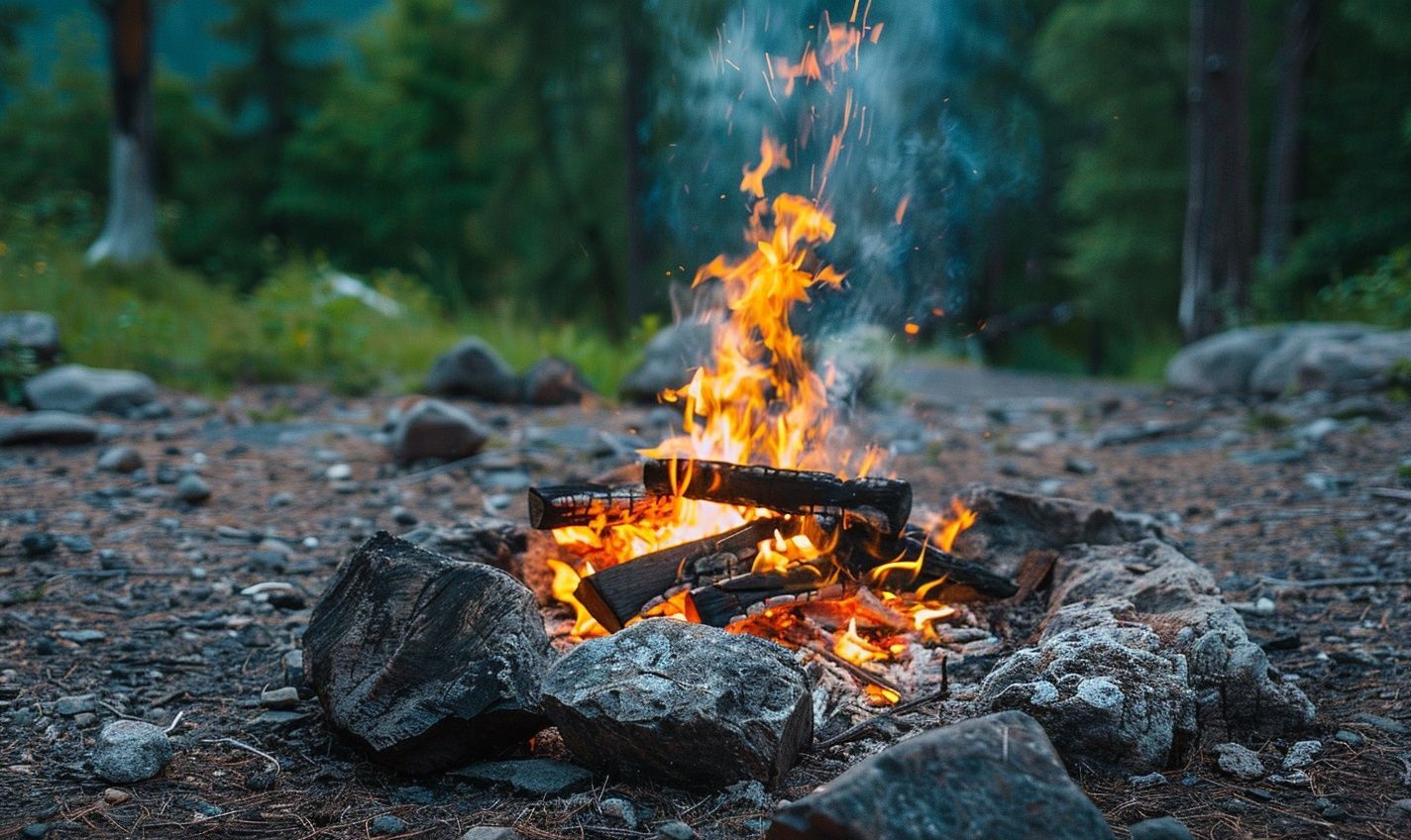
Lighting the Campfire Correctly
Now that you’ve chosen the perfect spot for your campfire gathered all the necessary supplies, built a proper fire ring, and prepared the campfire pit safely, it’s time for the moment of truth – lighting the campfire correctly. This step is crucial in ensuring a safe and enjoyable camping experience.
Essential Tips for Lightning the Campfire
Here are some essential tips to consider when lighting your campfire:
- Start small with dry twigs and kindling.
- Gradually add larger pieces of wood as the fire grows.
- Avoid using accelerants like lighter fluid.
Proper Techniques for Starting the Campfire
Now that you have your supplies and are ready to go, here are a few proper techniques for starting your campfire:
- Build a teepee or log cabin structure to allow for adequate airflow.
- Use a match or a lighter to ignite the kindling at the structure’s base.
- Blow gently at the base to provide oxygen and encourage the flames to grow.
Remember, the key to a successful campfire is patience and perseverance. Don’t rush the process; soon enough, a roaring fire will keep you warm and cozy throughout the night.
Ensuring Safety While Lighting the Campfire
Safety should always be your top priority when lighting a campfire. Here are some safety tips to keep in mind:
- Keep a bucket of water and a shovel nearby for emergencies.
- Never leave the campfire unattended.
- Ensure that the campfire is completely extinguished before leaving the site.
And there you have it—with these tips and techniques, you’ll be able to light your campfire correctly and enjoy a safe and memorable camping experience. So get that fire started and create lasting memories under the starlit sky.
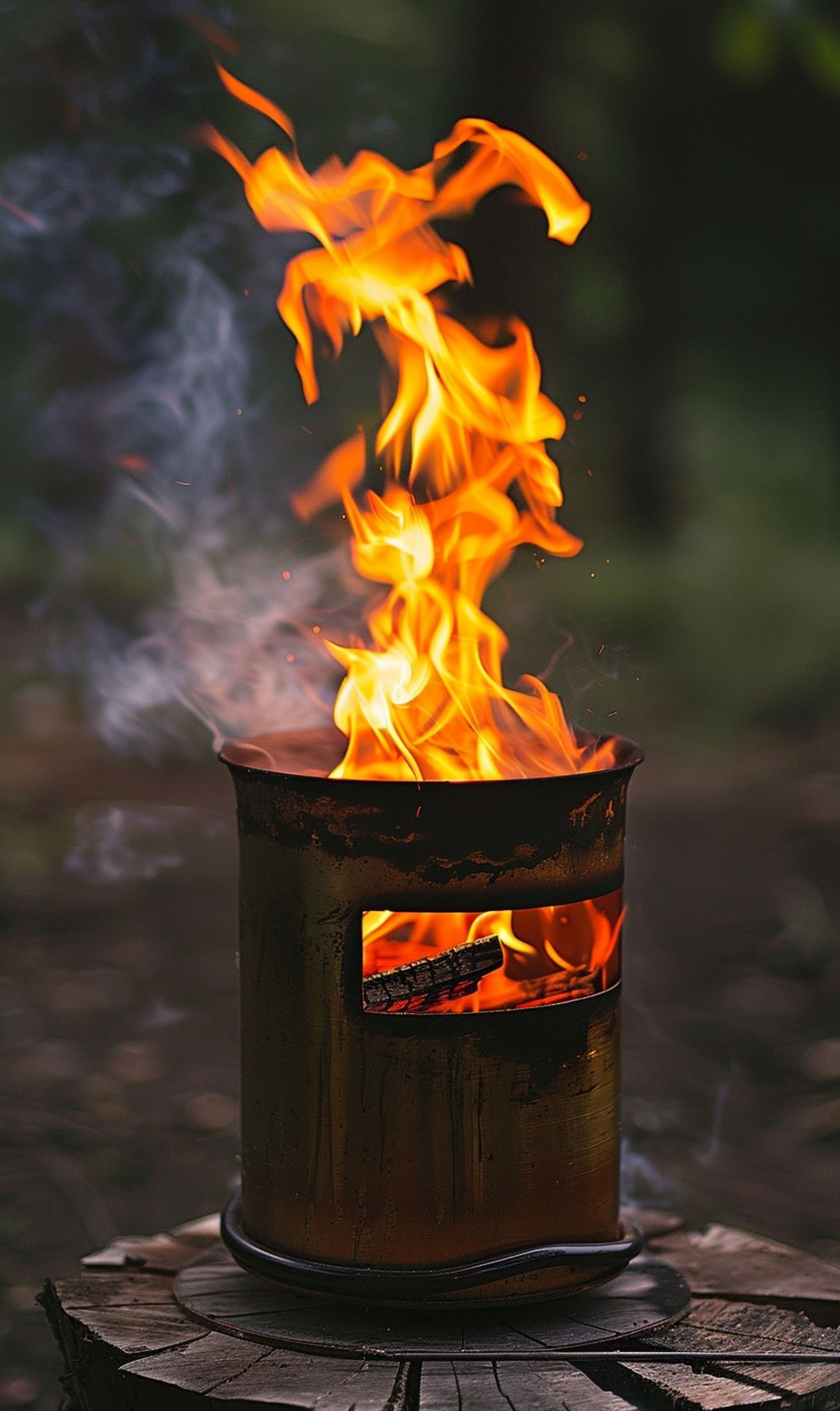
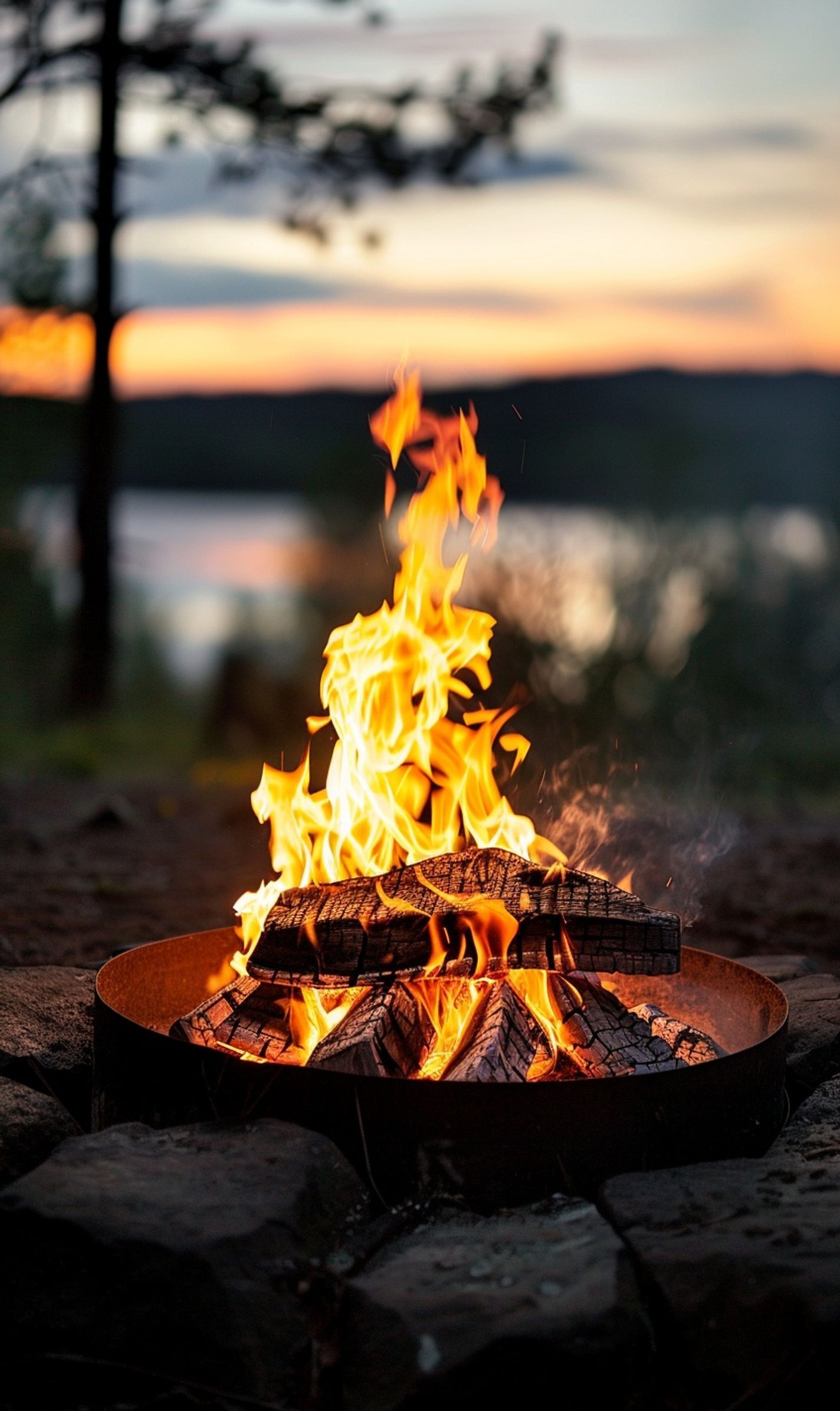
Maintaining a Safe and Controlled Flame
Congratulations—you’ve successfully built a campfire! The crucial part begins—ensuring it stays safe and under control throughout your camping experience. Let’s explore some essential tips for keeping that flame just right.
Be Mindful of Sparks and Embers
The flickering dance of flames can be mesmerizing, but those sparks and embers can pose a severe risk. Take these precautions to prevent accidents:
- Keep a bucket of water or sand nearby to douse any flying embers.
- Avoid wearing loose-fitting clothing that could catch fire easily.
- Never leave the fire unattended, ensuring it is under constant supervision.
Adjust the Size of the Flames
Just like turning a knob to control the heat on a stove, you can adjust the size of your campfire flames. What’s the secret to maintaining a safe and controlled flame?
- We are adding smaller pieces of wood to keep the flames at a manageable height.
- I am spacing out logs to ensure proper airflow, preventing flare-ups.
- I am regularly poking and shifting the logs to maintain an even burn.
Monitor Wind Conditions
Wind can quickly turn your cozy campfire into a raging inferno if not adequately managed. Here’s how to handle windy situations:
- Always check the direction of the wind before lighting a fire to prevent it from spreading uncontrollably.
- Position yourself and your camping gear upwind of the fire to avoid smoke and sparks blowing in your direction.
- Consider using a mesh screen or a fire blanket to contain embers when it’s windy.
Remember, a campfire should bring warmth and light to your camping experience, not danger and destruction. Following these guidelines and keeping a vigilant eye on your flames, you can enjoy the beauty of a safe and controlled fire under the stars.
Extinguishing the Campfire Effectively
So, you’ve had a fantastic time by the campfire, sharing stories, roasting marshmallows, and enjoying the warmth. But as the night winds down, it’s crucial to remember that extinguishing the campfire properly is just as important as building it safely.
Why Is Properly Extinguishing a Campfire Important?
Before you hit the hay, ensure the campfire is out entirely. This prevents wildfires, protects wildlife, and preserves the beauty of nature. Leaving a fire unattended can have devastating consequences.
While it may seem like a simple task, many people overlook this final step in campfire safety. But a few extra minutes can make a difference in preventing a potential disaster.
Follow These Steps to Extinguish Your Campfire Safely:
- Allow the wood to burn completely to ash, if possible. This reduces the amount of leftover debris.
- Use a shovel to spread out the embers within the fire ring.
- Pour water over the fire, dousing it thoroughly. Stir the embers and ashes with a stick.
- Feel the ashes with your hand to ensure everything is excellent.
Remember, if it’s too hot to touch, it’s too hot to leave! Repeat the process until the campfire site is cold.
Benefits of Properly Extinguishing a Campfire:
By extinguishing your campfire correctly, you ensure the environment’s and wildlife’s safety and set an excellent example for others. Plus, you can relax knowing you’ve left the campsite as pristine as you found it.
Conclusion
As you venture into the great outdoors, mastering the skill of building and maintaining a safe campfire is essential for a successful camping experience. By following the proper steps and incorporating safety measures, you can enjoy the warmth and ambiance of a campfire while minimizing risks.
Remember, safety should always be your top priority for campfires. Each step is crucial in ensuring a safe and enjoyable camping trip, from selecting the right location to gathering the appropriate materials to extinguish the fire completely before leaving.
By taking the time to learn and practice these basic camping skills, you will not only protect yourself and others but also contribute to preserving the natural environment. A safe campfire will provide comfort and sustenance and foster a sense of camaraderie and connection with nature.
So, whether you’re a seasoned camper or a beginner, building and maintaining a safe campfire is a skill that will serve you well on all your outdoor adventures. Embrace the warmth of the flames, the crackling of the wood, and the stories shared around the fire, knowing you’ve done so in the safest way possible.
Frequently Asked Questions (FAQs)
How to safely build a campfire?
To build a safe campfire, choose a clear, open area away from overhanging branches, dry grass, or other flammable materials.
What materials are essential for a safe campfire?
To build a campfire, you’ll need fuel (small sticks, dry leaves), kindling (small twigs), and fuelwood (larger logs).
How to safely light a campfire?
Use matches or a lighter to ignite the fuel. Avoid using flammable liquids like gasoline to start a campfire.
Why is it crucial to maintain a safe campfire?
Maintaining a safe campfire prevents wildfires and ensures the well-being of all campers and the environment.
How to extinguish a campfire safely?
Pour water over the campfire, stir the embers, and repeat until the ashes are cool. Always practice Leave No Trace principles.
What are some common mistakes to avoid when building a campfire?
Avoid building a campfire under windy conditions, using wet wood, or leaving the fire unattended. Always follow the regulations of the camping area.







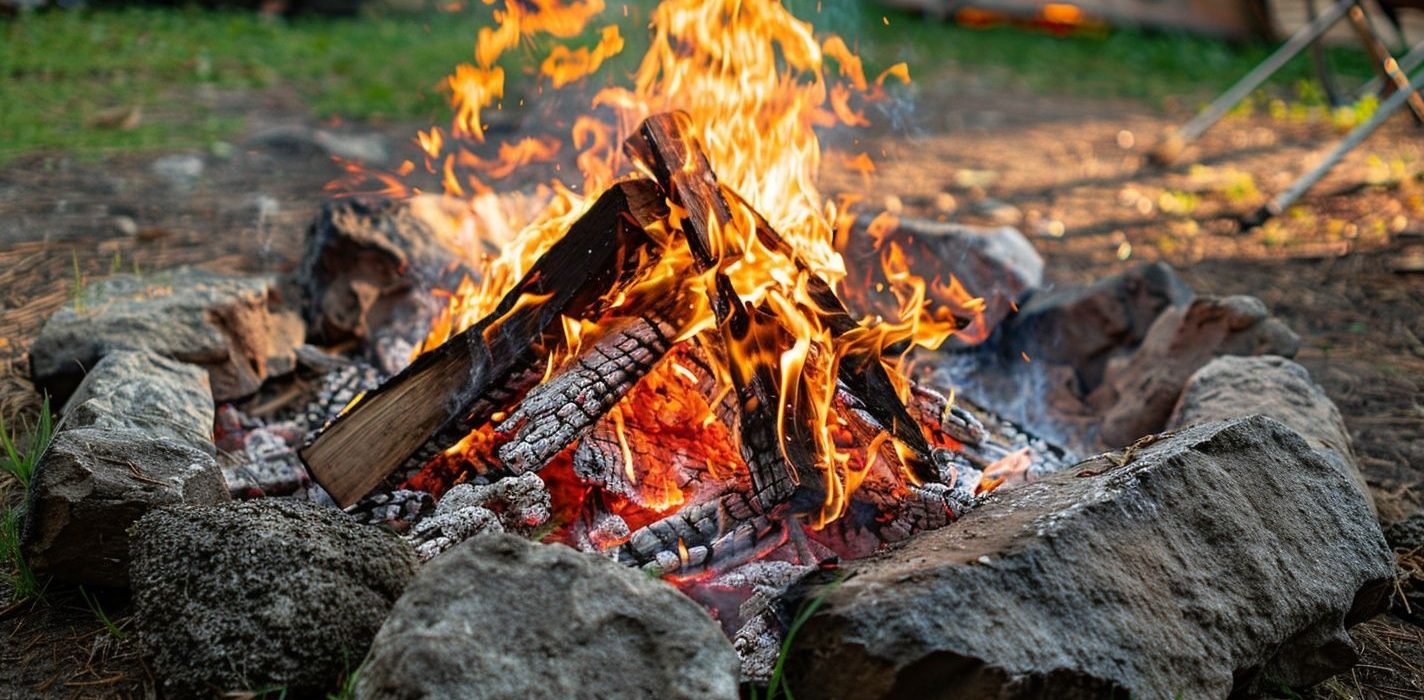
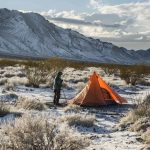
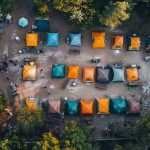
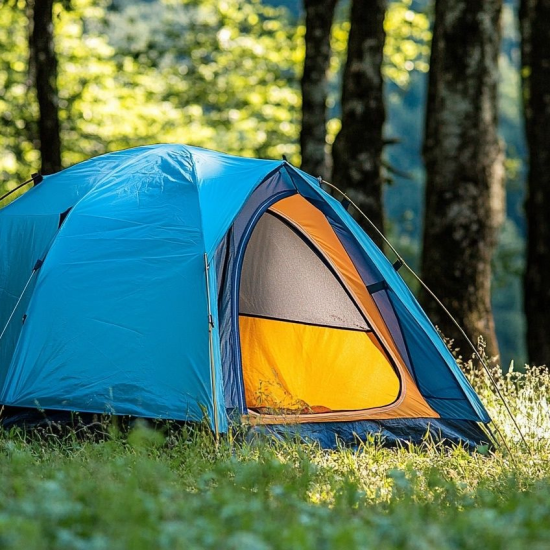
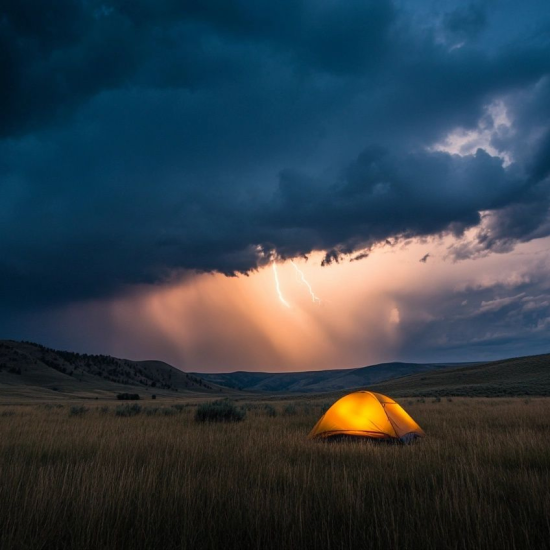
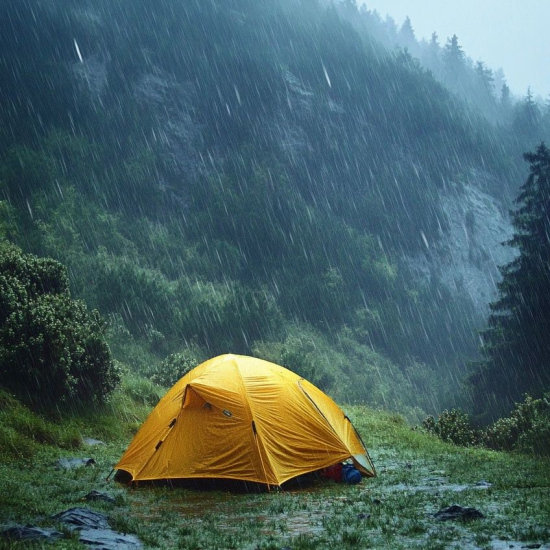
No Comment! Be the first one.